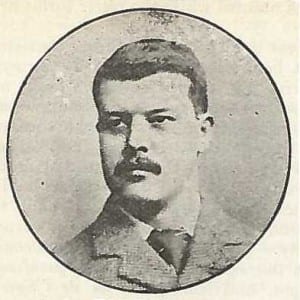The Finger Spelling alphabet
By H Dominic W Stiles, on 21 November 2014
There is not much written about finger spelling, but in April 1889 Albert Farrar, who had been educated by Arnold at Northampton, wrote an article in Quarterly Review of Deaf-Mute Education on the history of the manual alphabet;
The use of signs and pantomimic gestures is undoubtedly of great antiquity, so much so, that its origin is lost in the obscurity of the distant past. Language has various forms, speech being one, and signs and gestures another, and when we consider how permanent and universal is the faculty of expressing our thoughts in different ways, we may well believe that signs were resorted to as soon as men felt the need of some such expedients to supply the deficiencies of speech, or to facilitate intercourse with other tribes or nations. Some think they preceded speech. We must, however, look on language as a Divine gift, and probably the most reasonable conjecture we can form would be that most of its different forms existed from the first and helped one another till speech, greatly amplified and perfected, became the one medium of intercourse and the highest mode of expression. The “survival of the fittest,” if you like! Signs or gestures were, however, not entirely displaced […]
Farrar was writing only a few years after the death of Charles Darwin whose views on the origin of language are discussed here and he slips in Spencer’s phrase ‘Survival of the fittest’ that is widely associated with Darwin. We can dismiss the “Divine gift” idea, but the idea that gesture and signs preceded language is still a major theory. Farrar points out that the history of the British two handed alphabet was not terribly well known, but reminds us the Venerable Bede wrote about such a system in De computo seu Indigitilatione et de Loquela manuali per gestum digitorum [also described as De Computo vel Loguela per Gestum Digitorum].
In usage, our manual alphabet is not quite uniform over the country, but the differences are so few and slight as to be unnoticeable, except in v and z. Both the forms of q in Digiti-Linga are used. Dr. R. Elliott writes me, “I have every reason to believe the manual alphabet in its present form has always been used in the Asylum (Old Kent Road). I have met with two of the first six pupils, and the only difference they made on the present usage was, to put the knuckles of the forefingers together with the fingers spread out for v.“
We have illustrated older finger alphabets on the blog previously, but today we are inserting the alphabet from Digiti Lingua that is missing from our copy.
Bragg, Lois (1997). Visual-Kinetic Communication in Europe Before 1600: A Survey of Sign Lexicons and Finger Alphabets Prior to the Rise of Deaf Education. Journal of Deaf Studies and Deaf Education 2:1 Winter 1997 p.1-25 [a very comprehensive survey]
BRIEN, D. Dictionary of British Sign Language/English. 1992, Faber and Faber. p. 849. Fingerspelling in British Sign language.
BRENNAN M. Making borrowings work in British Sign Language. in: BRENTARI D. Foreign vocabulary in sign languages. 2001, Lawrence Erlbaum. pp. 49-85. (Library location: UTB TNX)
FARRAR, A. Our manual alphabet and its predecessors, Quarterly Review of Deaf-Mute Education 1889, Vol. 2 p.33-41
SPENCE, R SUTTON-, WOLL B, ALLSOP L. Variation and recent change in fingerspelling in British Sign Language. Language Variation and Change, 1990, 29(3), 313-330. (Library location: C6845 REF)
SPENCE, R SUTTON-, WOLL B. The status and functional role of fingerspelling in BSL. In MARSCHARK M, CLARK M D. Psychological perspectives on deafness. 1993, Lawrence Erlbaum. pp. 185-208.
SHIPGOOD L E, PRING T R. The difficulties of learning fingerspelling: an experimental investigation with hearing adult learners. European Journal of Disorders of Communication, 1995, 30(4), 401-416.
SPENCE, R SUTTON-. Grammatical constraints on fingerspelled English verb loans in BSL. In LUCAS C. Pinky extension and eye gaze: language use in deaf communities. 1998, Gallaudet University Press. pp. 41-58.
 Close
Close



